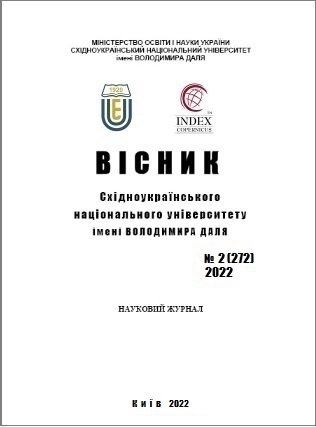Study of the influence of local surface laser treatment on the structure of quick-cutting steel and stamp steel
DOI:
https://doi.org/10.33216/1998-7927-2022-272-2-110-115Keywords:
quick-cutting steel, stamp steel, microhardness, wear resistance, laser treatmentAbstract
In the article, the influence of the parameters of the mode of local surface laser processing on the structure of high-speed and die steels is studied. To assess the possibility of surface melting of the tool during its hardening, it is proposed to use a complex parameter of the laser processing mode - the critical power density of laser radiation. The power density of laser radiation is a complex parameter of the processing mode, which relates the diameter of the laser beam, its power and the speed of the laser beam relative to the workpiece. The optimal values of the laser radiation power density are established, at which the surface melting of the processed materials is prevented and at the same time the maximum microhardness of the surface hardened layer is achieved. It has been experimentally proven that it is high-temperature hardening from the solid state that makes it possible to obtain the maximum microhardness and maximum dispersion of the structure of the hardened layer. Processing with reflow of the surface is undesirable due to a sharp decrease in the microhardness of the hardened layer due to the formation of a significant amount of residual austenite. It has been established that the depth of the hardened layer depends on the initial microstructure of the processed materials. The maximum depth of the hardened layer is achieved when, before laser irradiation, tool high-speed and die steels are subjected to bulk hardening and tempering according to standard conditions. It has been established that the main reason for the increase in the depth of the hardened layer in this case is the lower thermal conductivity of hardened steels compared to steels with an equilibrium structure. The optimal values of the overlapping coefficient of laser paths are determined, at which the minimum width of the tempering zones is achieved.
References
1. Дубняков В.Н., Ковалев А.И., Кащук О.Л. Роль мартен-ситного превращения в упрочнении стали при лазерной обработке и последующей деформации // МиТОМ, 2008. № 9. С. 54 – 57.
2. Забелин А.М.Лазерные технологии в машиностроении / А.М. Забелин, А.М. Оришин, А.М. Чирков. – Новоси-бирск: Изд-во Новосибирского гос. тех. ун-та, 2014. – 142с.
3. Гуреев Г.Д.Влияние лазерной и лазерно-ультразвуковой обработок на изменение износостойкости поверхностей трения стали // Вестник Самар. гос. техн. ун-та. Сер.: Физ.-мат. науки, 2017. № 2. С. 138 – 144.
4. Кремнев Л.С.Упрочнение рабочих поверхностей плос-копараллельных концевых мер длины лазерным излу-чением // ФиХОМ, 2020. № 3. С. 13 – 16.
5. Веденов А.А.Физические процессы при лазерной обра-ботке материалов. – М.: Машиностроение, 2019. 428с.
6. Абильсинтов Г.А.Физические основы обработки мате-риалов лучами лазера. – М.: Машиностроение, 2016. 2283с.
7. Гольдштейн М.И.Специальные стали. – М.: Металлур-гия, 1998. 408 с.

